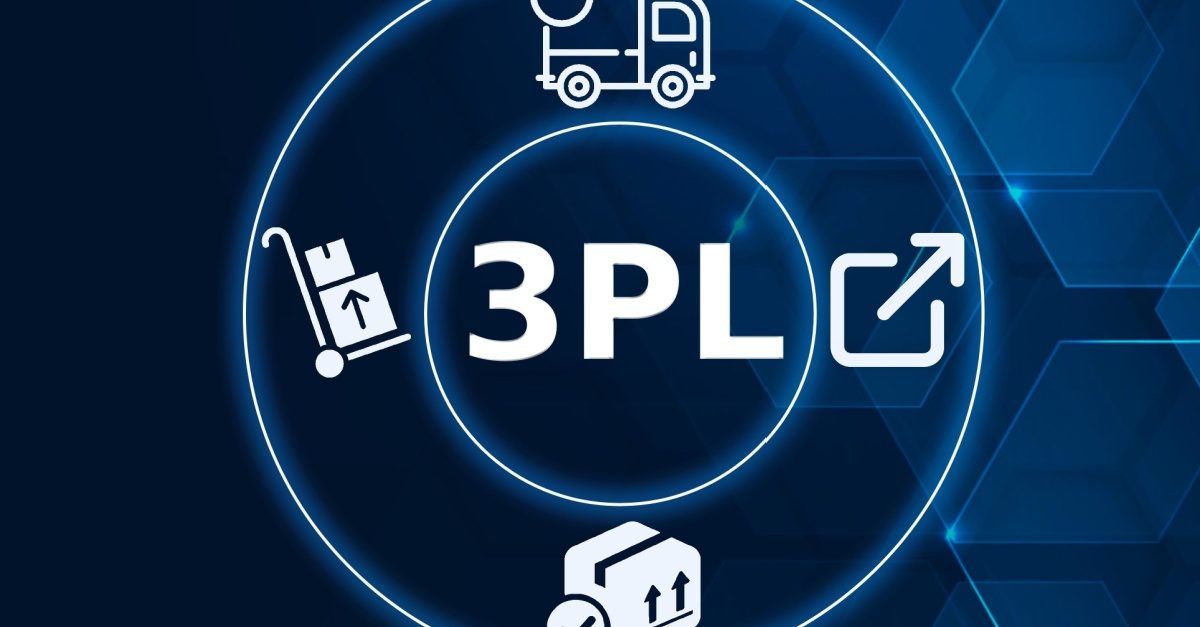
The Future of 3PL: Trends and Innovations Shaping the Industry
Efficient supply chain management has become a cornerstone of business success. The pandemic revealed the fragility of both international and domestic supply chains, and many companies have sought out logistics experts to fortify their operations. Third-party logistics (3PL) providers are at the forefront of providing the necessary expertise and solutions that drive operational efficiency, flexibility, and scalability. By embracing automation, data-driven logistics, and collaborative platforms, 3PL services improve operational efficiency and profitability for businesses. Here, we will take a closer look at how this outsourcing trend is driving industry change.
What is 3PL?
Third-party logistics (3PL) refers to outsourcing logistics functions, such as transportation, warehousing, and distribution, to specialised service providers. By working with a 3PL, businesses delegate supply chain tasks to experts who offer tailored solutions, economies of scale, and access to the latest technologies, such as AI integrations for data analytics and SaaS platforms. Essentially, 3PL providers act as intermediaries between businesses and their customers, ensuring efficient and cost-effective product delivery.
The Role of 3PL in the Supply Chain
By managing the logistics process from start to finish, 3PLs help businesses with inventory management and order fulfilment to strategic planning. The growing reliance on advanced technology means 3PLs are increasingly becoming integral partners in supply chain strategies. Many 3PLs have strategically placed warehouses that allow shipping times to be reduced. Within these warehouses, they utilise advanced Warehouse Management Systems (WMS) to provide real-time inventory updates and insights into inventory trends over time so businesses can make informed decisions about reordering and optimising stock levels.
Value-Adding Solutions
3PL management of tasks for eCommerce businesses is especially vital as they handle large volumes of orders, particularly during peak seasons. By outsourcing logistics functions such as picking, packing, and shipping, eCommerce businesses can focus on core activities like marketing and product development. Additionally, 3PL providers often offer value-added services such as returns management, kitting, and even customer service support. This flexibility enables businesses to scale their operations efficiently without investing heavily in their own infrastructure, ultimately reducing costs and improving customer satisfaction through faster and more reliable deliveries.
The Current State of the 3PL Industry
In recent years, the 3PL industry has experienced exponential growth, primarily due to the expansion of eCommerce. The COVID-19 pandemic also played a central role in this shift, as businesses faced supply chain disruptions and an unprecedented increase in online shopping.
According to Grand View Research, the global 3PL market was valued at approximately $1.1 trillion in 2023, and the industry is forecasted to grow at a compound annual growth rate (CAGR) of 8.1% from 2024 to 2030. Sectors such as healthcare, retail, and manufacturing are at the forefront of this demand, each requiring highly specialised logistics solutions.
Challenges Facing 3PL Providers
While the 3PL industry is growing rapidly, it also faces several challenges, particularly in relation to cybersecurity. As 3PLs increasingly rely on digital infrastructure to manage logistics and supply chain operations, cybersecurity threats remain a paramount risk. Ransomware has proven to be an effective attack by hackers, prompting many 3PL providers to take a closer look at their security audit process. According to Gitnux’s 2024 report, 71% of logistics companies now consider cybersecurity a top priority, yet only 55% of logistics companies conduct regular security audits.
In addition to 3PL security risks, supply chains are always at risk from supplier and logistical errors, and demand fluctuations. Additionally, this past year, rising fuel costs, labour strikes, potential shifting tariffs, and infrastructure disruptions have become more prominent concerns overall. While the aforementioned more so impacts last-mile delivery, each can cause ripple effects on the scaling efforts of 3PL providers. The need for flexible and adaptive solutions to cope with these disruptions has never been more critical.
Emerging Trends in 3PL
Digital Transformation
One of the most significant trends transforming the 3PL industry is digitalisation. Forbes highlights how technologies such as artificial intelligence (AI) and the Internet of Things (IoT) are increasingly being integrated into logistics operations. Specifically, AI is helping 3PL providers optimse delivery routes, automate customer service, and improve demand forecasting. Meanwhile, IoT devices are enhancing real-time tracking of shipments, providing increased visibility and transparency across the entire supply chain.
In addition, blockchain technology is being explored for its potential to improve security and transparency in supply chains. By creating immutable records of transactions, blockchain can help reduce fraud, enhance traceability, and streamline customs clearance processes.
Sustainability Initiatives
Sustainability is becoming an ever-more important focus for 3PL providers. In response to consumer demand and environmental regulations, many companies are adopting green logistics practices. DHL, for example, has committed to achieving net-zero logistics-related emissions by 2050. Such initiatives include the use of electric vehicles (EVs), sustainable packaging solutions, and carbon footprint tracking systems.
Sustainability efforts are also reshaping Corporate Social Responsibility (CSR) strategies, with logistics providers integrating eco-friendly practices into their operations. For many businesses, a commitment to green logistics is now a key differentiator in a highly competitive market.
Customisation and Flexibility
With businesses operating in an increasingly fast-paced environment, customisation and flexibility have become vital. Many companies now seek 3PL providers that can offer tailored solutions to meet their specific logistics needs. This includes faster delivery times, specialised handling for sensitive goods, and the ability to adapt to shifting market demands.
The rise of omni-channel retail, where businesses operate across both physical and digital channels, has created new logistical challenges. As a result, 3PL providers must offer flexible, responsive services that can accommodate varying consumer expectations, including same-day or next-day delivery.
Innovations Shaping the Future of 3PL
Automation and Robotics
Automation is rapidly transforming logistics operations. In warehouses, robots are increasingly being used for tasks such as picking, packing, and sorting, helping to reduce labour costs and improve operational efficiency.
In addition, autonomous vehicles and drones are being explored as solutions for last-mile delivery. Although these technologies are still in the early stages, they have the potential to revolutionise the speed and cost of deliveries.
Data-Driven Logistics
Data analytics is another powerful tool driving the future of 3PL. By analysing large datasets, logistics providers can gain valuable insights into consumer behaviour, optimise supply chain operations, and predict demand more accurately. Doing this manually is time-consuming. Automated data-analysis, particularly predictive analytics, allows 3PLs to plan inventory management based on historical trends around factors such as seasonality. By more accurately anticipating customer demand, these companies are better prepared for market changes.
Collaborative Platforms
Collaboration is becoming a key component of the future 3PL industry. Logistics as a Service (LaaS) platforms are emerging as a solution that allows multiple stakeholders to share logistics resources, ultimately reducing costs and improving efficiency. This trend is also reflected in the rise of shared warehousing, where businesses share storage and distribution networks to increase flexibility and save on costs.
The Role of 3PL in Cross-Border Logistics
Cross-border logistics presents unique challenges, ranging from complex customs regulations to varying tax regimes and tariffs. 3PLs are well-versed in navigating these hurdles due to their understanding and ability to ensure compliance with international trade laws.
Further, many leading 3PL providers also adopt innovative solutions to accurately address bottlenecks before they happen. For example, integrated cross-border logistics services, such as pre-cleared customs and cross-docking facilities, simplify the process of moving goods across borders. Technology is also playing a key role, with digital platforms enabling more efficient customs clearance and documentation processes.
Staying Ahead in the Evolving 3PL Landscape
Emerging trends and innovations are a mainstay in the 3PL industry. These not only offer providers a competitive edge but also their clients and customers. The integration of advanced technologies, the growing focus on sustainability, and the demand for customised logistics solutions are currently reshaping this industry’s environment. By embracing these shifts, 3PL providers can remain central to optimising global supply chains and helping businesses meet the demands of an ever-changing market.

About the Author
Jesse Mitchell is the Director of Business Development at Strader-Ferris International, a Canadian & U.S. customs brokerage, cross-border logistics, and warehousing company. Founded in 1953 by Raymond Strader, SFI was built around his beliefs of an honest and straightforward approach to helping clients succeed. Strader-Ferris has been in business for 70 years and successfully handled millions of cross-border shipments.
